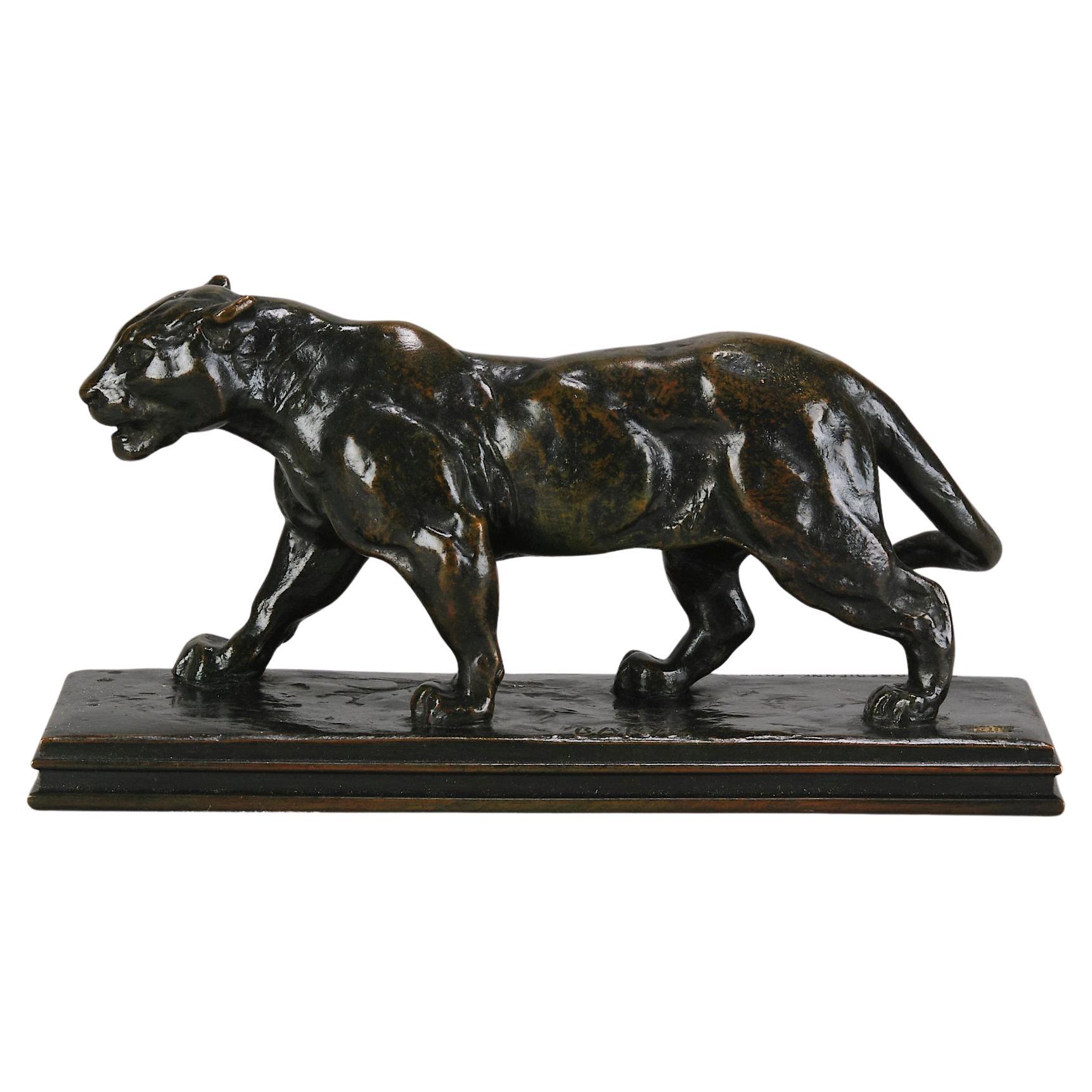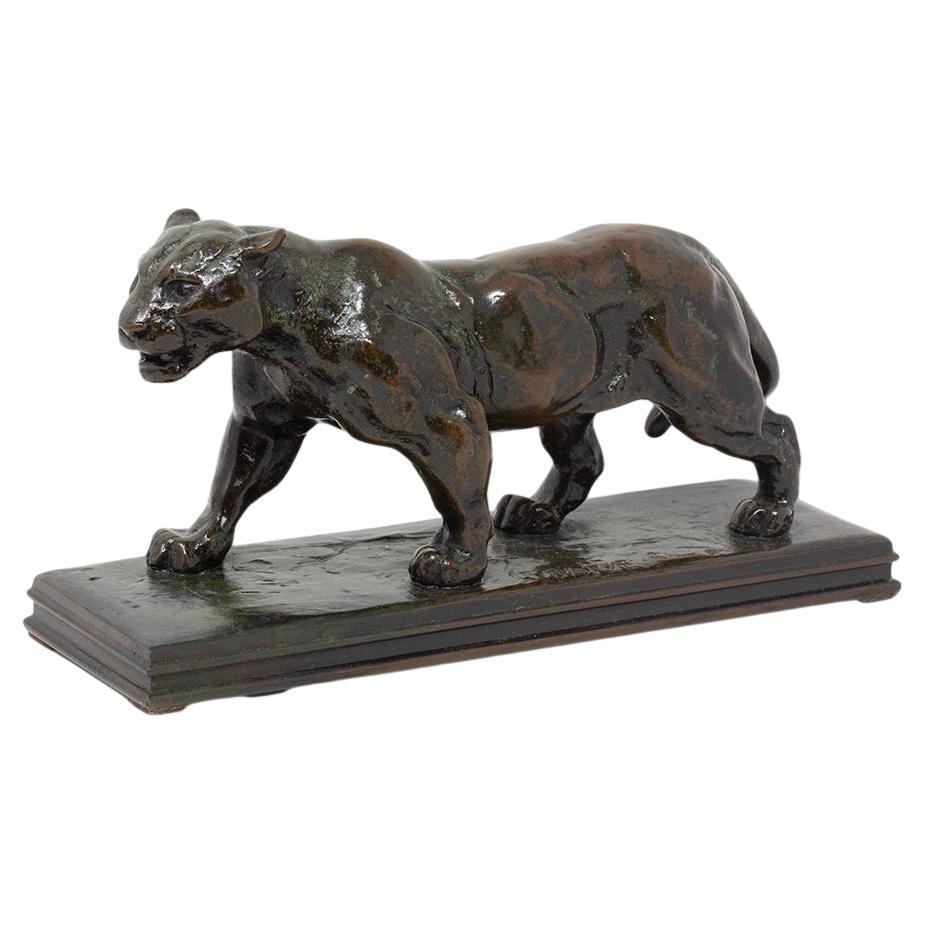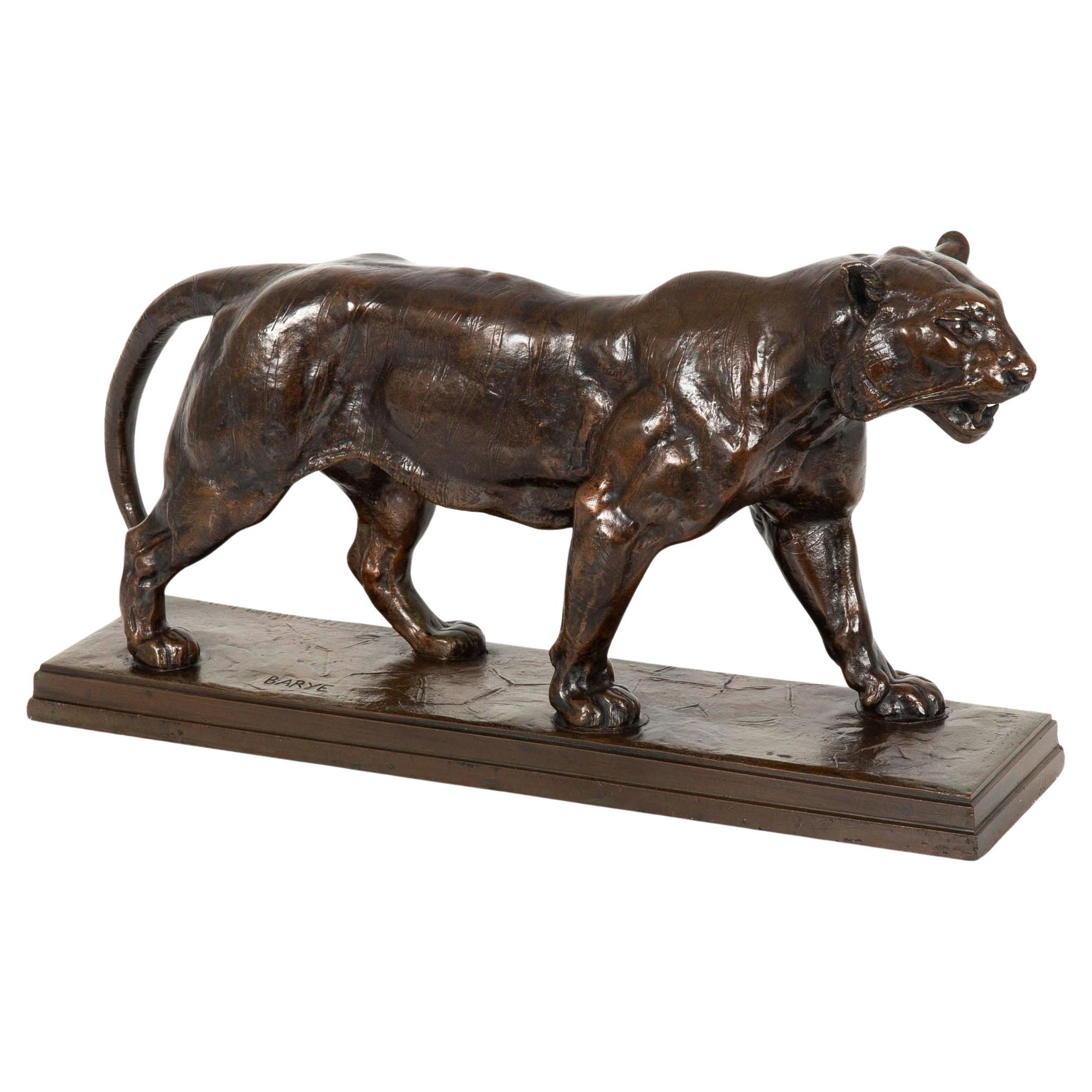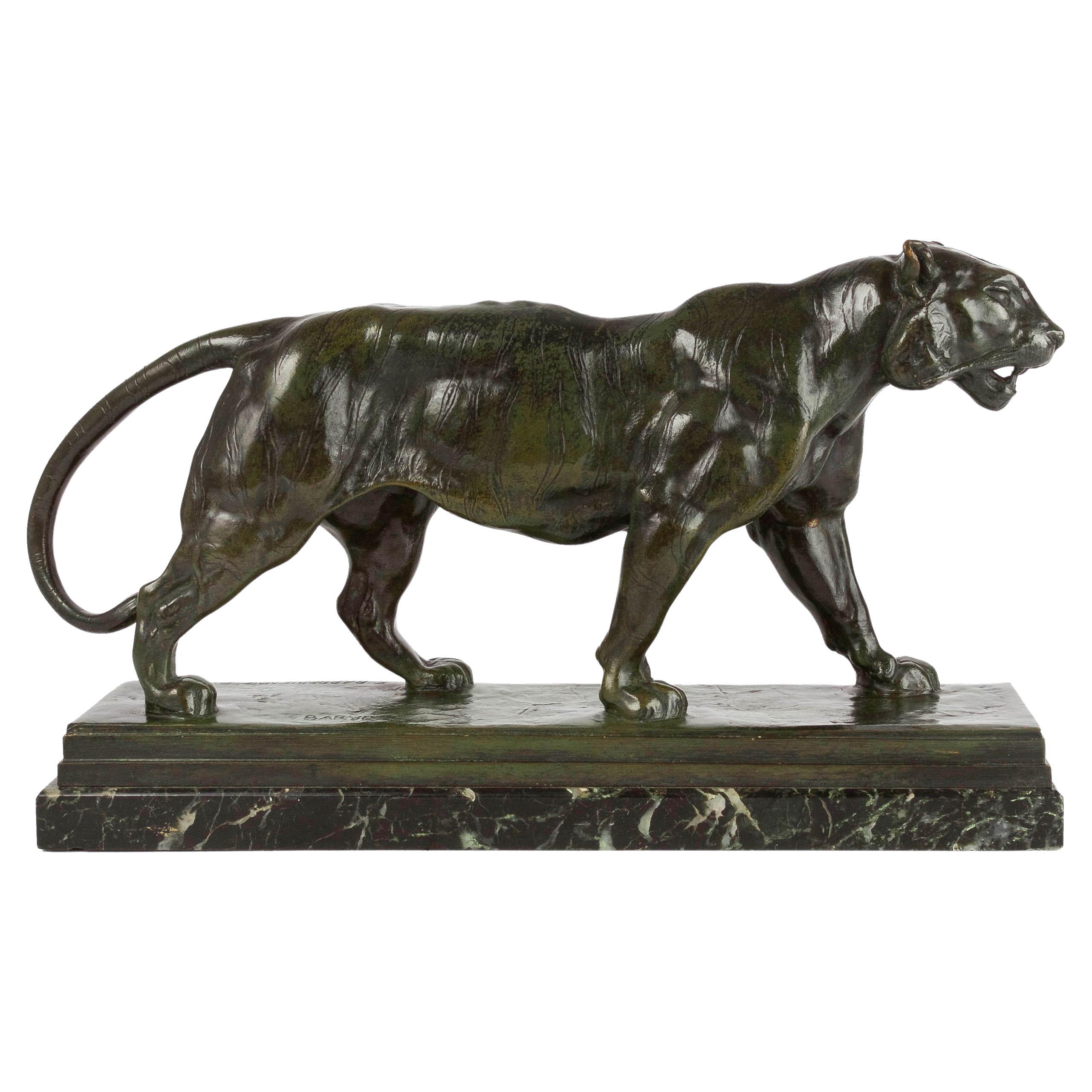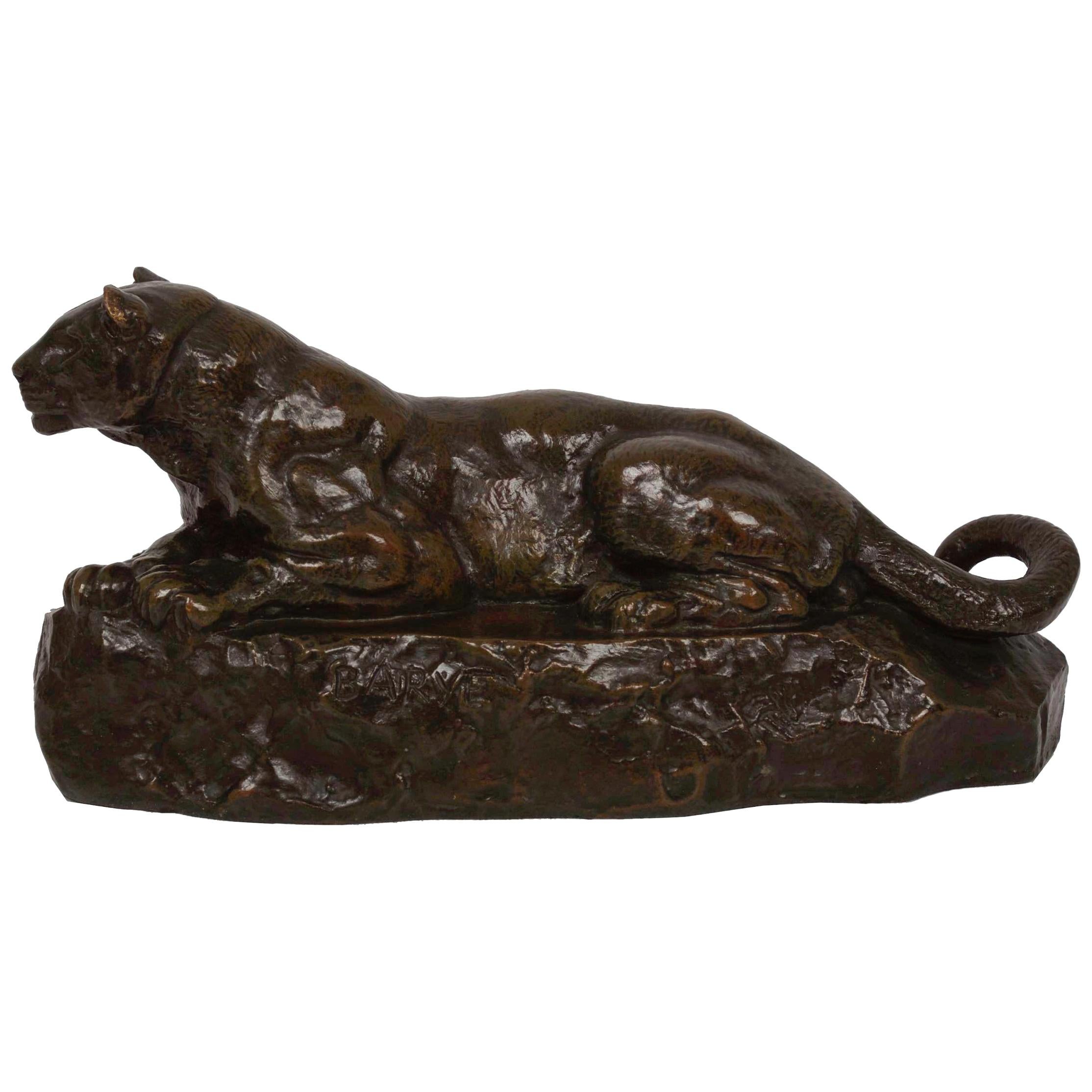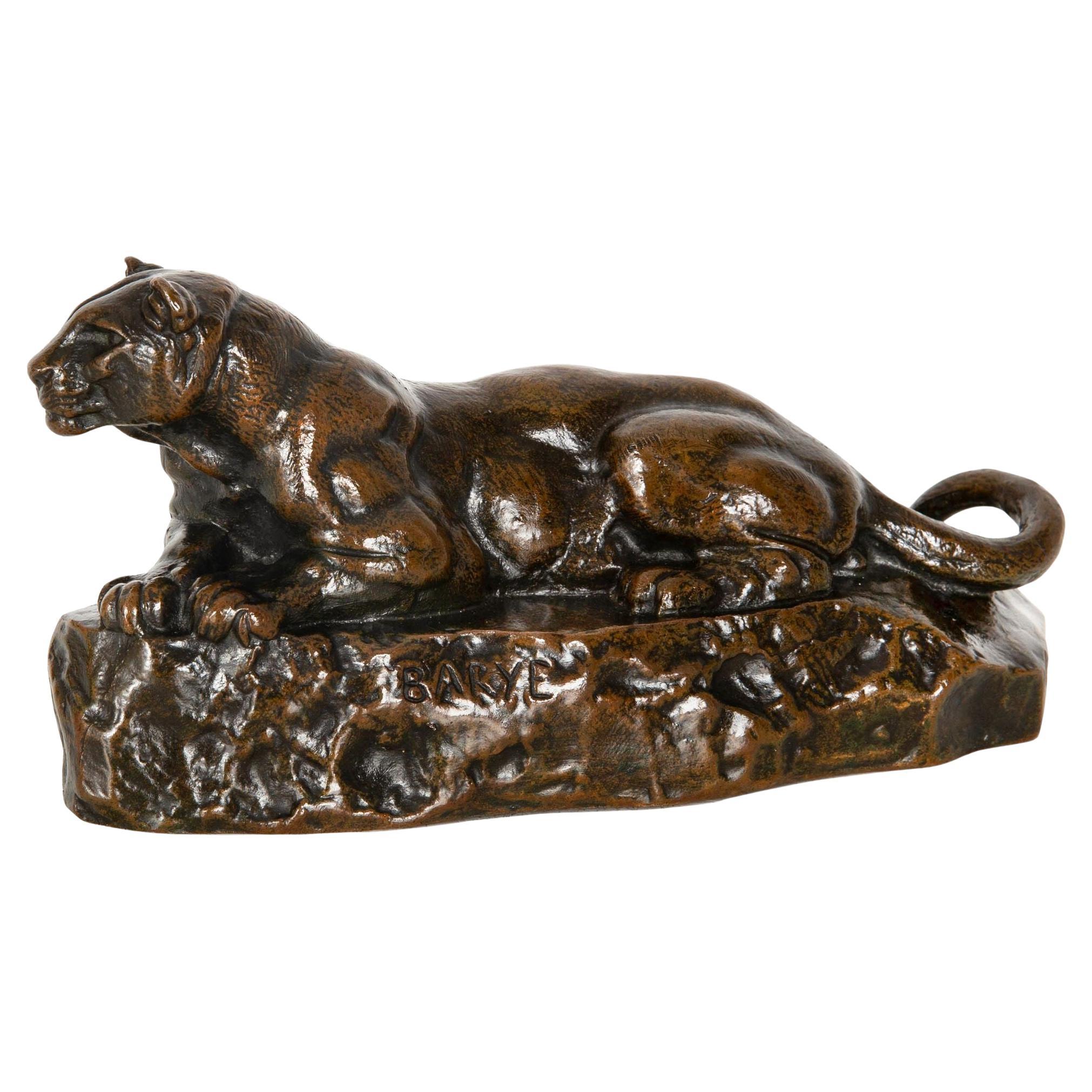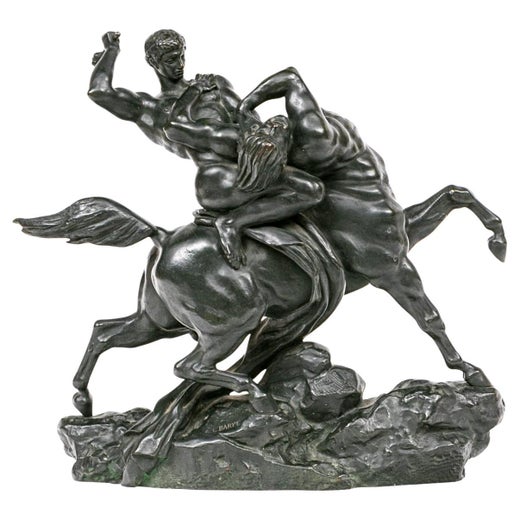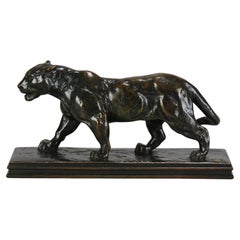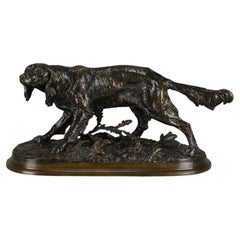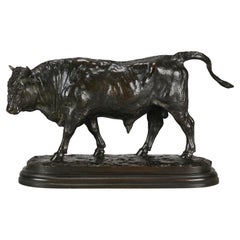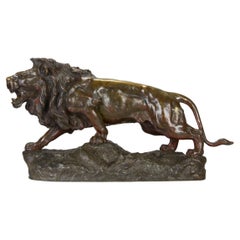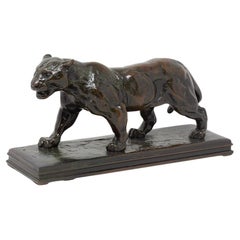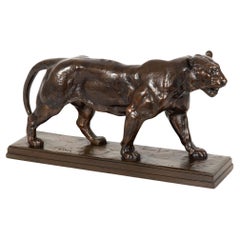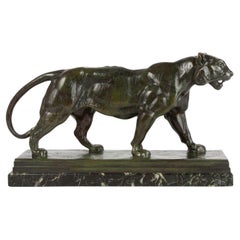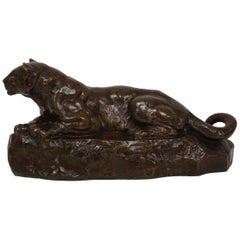Mid 19th Century Animalier Bronze entitled "Jaguar Debout" by Antoine L Barye
À propos de cet article
- Créateur:Antoine-Louis Barye (Artiste)
- Dimensions:Hauteur : 33,02 cm (13 po)Largeur : 53,34 cm (21 po)Profondeur : 15,24 cm (6 po)
- Style:Art nouveau (De la période)
- Matériaux et techniques:
- Lieu d'origine:
- Période:
- Date de fabrication:1875
- État:Usure conforme à l'âge et à l'utilisation.
- Adresse du vendeur:London, GB
- Numéro de référence:Vendeur : 93821stDibs : LU3216345385292
Antoine-Louis Barye
Fils d'un orfèvre, Antoine-Louis Barye, né à Paris, était un sculpteur de sujets animaliers et acclamé, non seulement pour son habileté apparente, mais aussi en tant que fondateur de ce que l'on a appelé l'école française des animaliers. Parmi ses mécènes se trouvaient des représentants du gouvernement de l'État et de la royauté, notamment le duc d'Orleans et les ducs de Luynes, de Montpensier et de Nemours.
Bien rémunéré, Barye a pu acheter les meilleurs matériaux et embaucher les artisans fondeurs les plus qualifiés du pays. La fonderie qu'il a engagée appartenait à Ferdinand Barbedienne et les moulages de cette période étaient estampillés avec les lettres FB. Cependant, il ne gagnait pas beaucoup d'argent avec son travail car il était tellement perfectionniste qu'il lui arrivait souvent de ne pas vendre son travail parce qu'il pensait qu'il n'était pas "tout à fait bien". En 1848, il déclare faillite et ses moules et plâtres sont vendus avec les droits d'auteur.
La spécialité de Barye était le gibier sauvage excité et en colère, comme les lions, les tigres et les éléphants, mais il réalisait également des groupes équestres et des personnages de la mythologie. Afin de réaliser des représentations réalistes de l'anatomie animale, il a passé beaucoup de temps au Jardin des Plantes à Paris. Il a d'abord suivi une formation d'apprenti graveur sur métal, mais son incorporation dans l'armée en 1812 a mis fin à cette formation. En 1832, il avait établi son Studio, et sa méthode unique à l'époque consistait à estamper à froid ses fontes de bronze de manière à ce que chacune d'entre elles porte un numéro spécial. Il présente sa première œuvre, Le Milo de Croton, au Salon de Paris en 1819, où il obtient un deuxième prix. En 1831, une œuvre considérée comme un chef-d'œuvre, Tigre dévorant un gavial, a été présentée au Salon et achetée pour le jardin du Luxembourg, qui se trouve aujourd'hui sur le site Louvre. Cependant, plusieurs de ses propositions ultérieures pour le Salon ont été rejetées, ce qui l'a tellement irrité qu'entre 1836 et 1851, il a refusé de soumettre des propositions. En 1851, il expose à nouveau au Salon avec Jaguar dévorant un lièvre, et cette œuvre, comme celle de 1831, est placée dans les jardins du Luxembourg et finalement au Louvre.
Malgré ses problèmes avec le Salon, Barye reçoit de nombreux éloges pour son travail, et la période 1837-48 est considérée comme la plus productive de sa carrière. Cependant, en 1848, lorsqu'il perd le contrôle de son œuvre et qu'elle est reproduite par d'autres, dont Martin et Barbedienne, les sculptures, selon certains professionnels de l'art, ne sont pas aussi habilement exécutées. En 1848, après sa faillite, Barye devient directeur des moulages et modèles au Louvre, jusqu'en 1850, date à laquelle il est remplacé par Emmanuel Fremiet. Ce fut une période très difficile pour lui. Cependant, en l'espace de quelques années, il a commencé à recevoir des éloges pour la qualité et le caractère unique de son travail, et les gens ont commencé à apprécier les images puissantes de ses sculptures, en particulier les animaux sauvages dans leur environnement naturel. En 1854, il est nommé maître du dessin zoologique au Musée national d'histoire naturelle d'Heldly et occupe ce poste jusqu'à sa mort en 1875.
- ExpéditionRecherche du devis...Expédition depuis : London, Royaume-Uni
- Politique des retours
Plus d'articles de ce vendeur
Tout afficherAntiquités, Milieu du XIXe siècle, Français, Art nouveau, Sculptures - A...
Bronze
Antiquités, Fin du XIXe siècle, Français, Art nouveau, Sculptures - Animaux
Bronze
Antiquités, XIXe siècle, Français, Art nouveau, Sculptures - Animaux
Bronze
Vintage, Années 1910, Français, Art nouveau, Sculptures - Animaux
Bronze
Antiquités, Milieu du XIXe siècle, Français, Victorien, Sculptures - Ani...
Marbre, Bronze
Antiquités, Milieu du XIXe siècle, Français, Art nouveau, Sculptures - A...
Bronze
Suggestions
Antiquités, Fin du XIXe siècle, Français, Belle Époque, Sculptures - Ani...
Bronze
Antiquités, XIXe siècle, Français, Romantique, Sculptures - Animaux
Bronze
Antiquités, XIXe siècle, Français, Romantique, Sculptures - Animaux
Marbre, Bronze
Antiquités, XIXe siècle, Français, Romantique, Sculptures - Animaux
Bronze
Antiquités, XIXe siècle, Français, Romantique, Sculptures - Animaux
Bronze
20ième siècle, Français, Autre, Sculptures - Animaux
Pierre, Bronze
